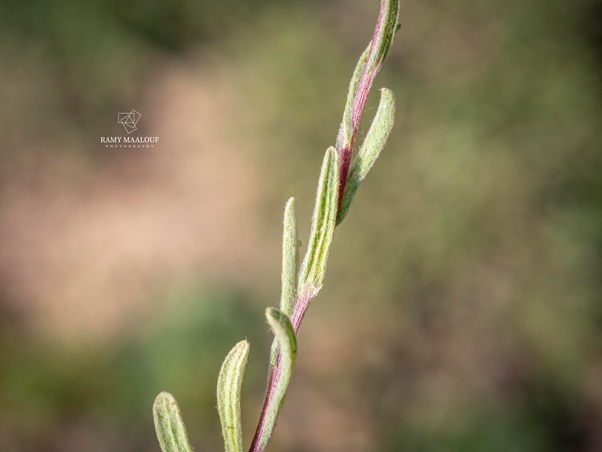Family |
Asteraceae
Helichrysum pallasii
(Spreng.) Ledeb.
Helichrysum pallasii (Spreng.) Ledeb.
(Fl. Ross. 2: 606; 1845 – Nouvelle Flore du Liban et de la Syrie, vol. 2, Pl. CCVIII nº 3; 1969)
• Life-form & habit: Perennial, suffruticose plant 10–40 cm tall, forming compact or loose tufts. Stems woody at the base, ascending to erect, white- or grey-tomentose, often branched above. Dormant buds arise at the summit of short, leafy vegetative shoots (1–10 cm long), sometimes swollen and flocculently woolly.
• Leaves: Alternate, sessile, subamplexicaul, variable in shape—lower leaves oblanceolate to oblong, 15–40 × 3–8 mm, upper leaves narrower and linear-lanceolate, all grey-green to yellowish-green, covered with an arachnoid or lanate indumentum, often non-glandular.
• Inflorescence & flowers: Capitula numerous, arranged in dense corymbose clusters. Involucral bracts dry, glossy, golden-yellow to straw-coloured; inner series longer and more lustrous. Florets all tubular, yellow, hermaphrodite. Receptacle flat, naked.
• Fruit: Achene cylindrical, glabrous or faintly pubescent, crowned by a pappus of numerous, fine, white bristles.
• Phenology: Flowers from June to August; fruits mature in late summer.
• Habitat & elevation: Dry, rocky slopes, open grasslands, and steppe-like montane habitats on limestone, 1 000–2 400 m. Prefers sunny, well-drained, stony soils.
• Lebanese distribution: Reported by Mouterde from Mount Lebanon, notably Sannine, Ehden, Bcharré, and Barouk; frequent on limestone slopes and subalpine meadows.
• Native to: Iran, Iraq, Lebanon-Syria, Palestine, Transcaucasus, Türkiye (POWO).
• ⚠️ Taxonomic note: Helichrysum pallasii is a variable montane species of the Eastern Mediterranean and Irano-Turanian regions. Mouterde (1969) distinguished it from related taxa by its lanate foliage, non-glandular stems, and compact golden corymbs. It differs from H. stoechas and H. orientale by its shorter, tufted habit, grey-tomentose stems, and absence of glandular hairs.














